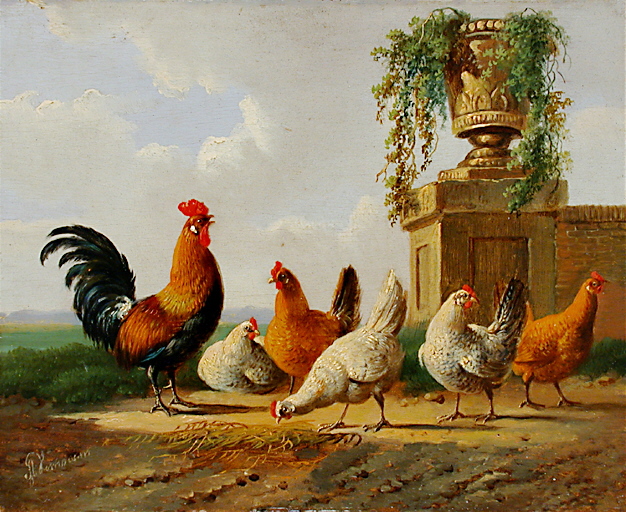Egg cartons are emblazoned with feel good words intended to convince the consumer of the healthy and wholesome conditions the chickens are raised under. But what does that really mean to the person eating the eggs?
In short? Very little.
Consumers need to understand that the job of the package is to sell the product, and that marketing experts will sell in any way they can. Some terms to be wary about on egg packages include:
 |
| image courtesy of: wikimedia commons |
- Cage-Free: Means exactly that. The chickens aren't in a cage. They may however be packed into a crowded barn with no access to the outdoors. In fact, cage free chickens are often subjected to the cruel practice of beak trimming to ensure they don't hurt each other in their crowded conditions.
- Free-Range: Means they have access to the outside. Access is legally defined as a door. Outside may be nothing more than a small square of dirt. Outside is not a bucolic pasture where chickens are in the sunshine breathing fresh air and pecking at bugs. In fact, chickens are not even required to have access until they are 5 weeks old, at which time, their habits are already established.
- Organic: While this term is regulated and indicates the sort of diet the chickens are fed, they still may live in overcrowded coops, with minimal access to the outside. It's just that their food is organic, and free of hormones and antibiotics.
If your eggs come from a commercial egg producer, they probably do not have the health benefits that true free-range, organic diet, cage-free, yard roaming chickens have. Eggs from truly free chickens actually have up to six times the vitamin D that a standard egg has, as the hen absorbs the sunshine vitamin which becomes part of her egg.
The only way for a consumer to truly know they are getting the healthiest and safest eggs is to buy from a local farmer or raise their own chickens.
3 comments :
This is probably a stupid question, but I used to buy my eggs locally from different farmer's markets and I found that those eggs had little specks of reddish brown inside the egg white and it freaked me out. What is that, exactly? I never see it inside grocery store eggs.
Here is a really comprehensive explanation, but in short, it's just that mass produced eggs are sorted for "imperfections" and removed. (I quote)
So what exactly ARE those little brown spots you sometimes find floating in an egg?
Those brownish or reddish specks you’ll occasionally find are deemed “meat spots” or “blood spots.” Eggs destined for the grocery store shelf are “candled” by a machine to check the inside for any defects– this is why you’ll rarely come across a meat spot in a store-bought egg.
http://www.theprairiehomestead.com/2013/02/what-are-those-spots-in-my-farm-fresh-eggs.html
I'm LOVING the "real food" tear of late! The labeling thing is absolutely maddening. On one hand, I want to know that there is some regulation of what gets put on food labels. On the other hand, things like the "free range" meaning there is a pop-out door to a bare patch of ground would seem to indicate that the people making the rules are either stupid, or bought and paid for by the folks who would benefit by such a designation. In another example, one source has indicated to me that "grass fed" can be added to any beef label (because, at some point, every cow eats grass, making the term---in that context---virtually meaningless), while another, more official source indicated that I can only make that "claim" with the approval of a "certifying body" (not unlike "organic" certification---it boils down to $$$---pay the right people, and you can use the buzzwords that people want to buy). I concur wholeheartedly with your assertion that the only way to be truly sure of what your eating is to raise your own, or KNOW YOUR FARMERS! (Which is why we encourage folks to come out and "meet their meat"!) Keep up the great blogging! Knowledge is power!
Post a Comment